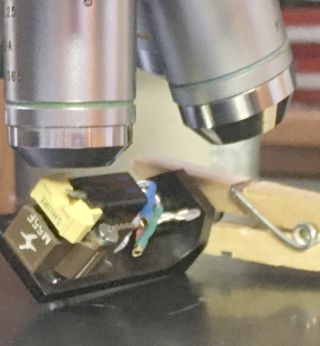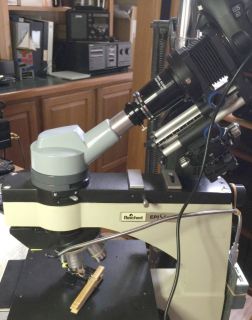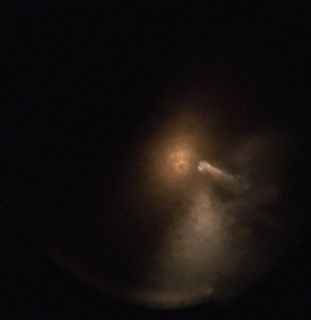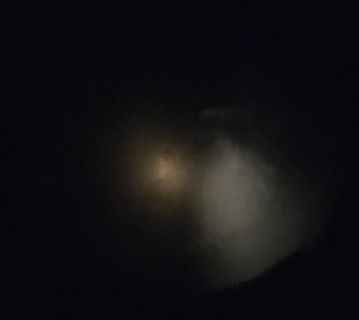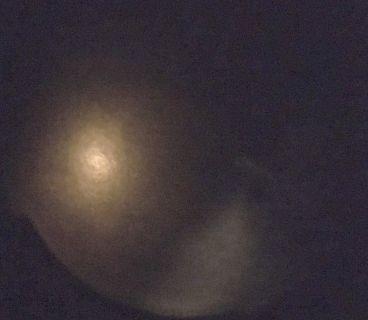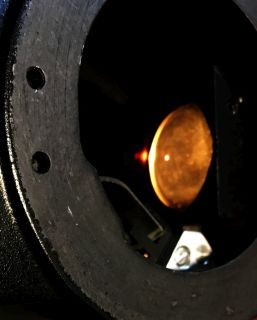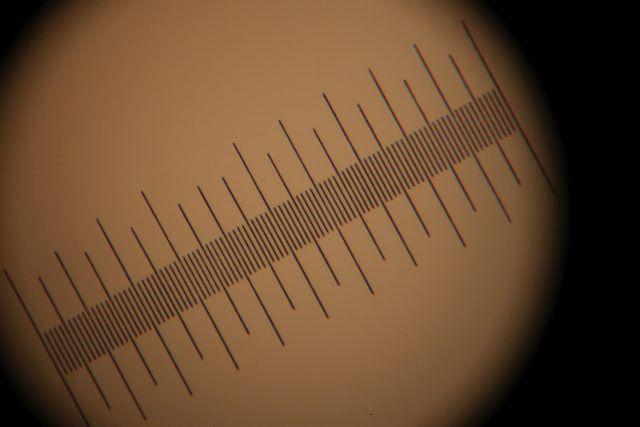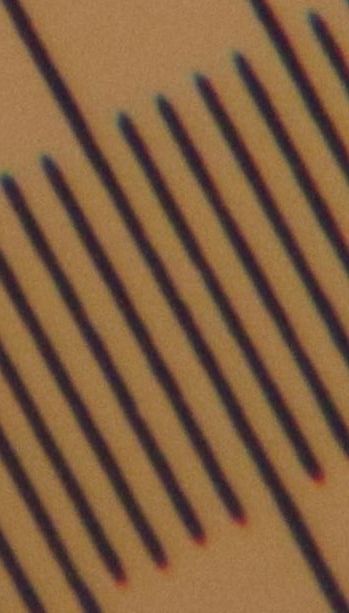back
 AO American Optical EPIStar
Although it facilitates sorting spacing between camera sensor and objectives, a bellows is not necessary; extension tubes suffice, with more length yielding greater magnification. The resulting image has decent resolution, but poor contrast. 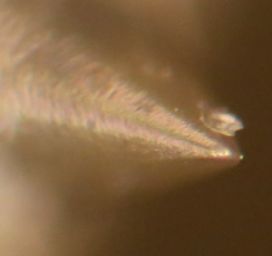
This microscope has short working distance objectives; the 20x objective would not clear this stylus' plastic grip at this angle. 90 degree shots will clear but require image stacking; whether objective darkfield illumination will then highlight stylus wear spots remains to be seen. EPIStar contrastTo investigate low contrast, Ray Parkhurst suggested removing the camera and looking down into the tube.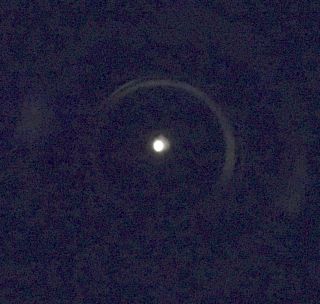 Internal surfaces were not reflecting appreciable light, but a small bright spot and dim blob are seen in the optic at the bottom of the eye tube. Lacking ground glass, wax paper was laid over the camera adapter:
The bright spot appears less focused than when viewed directly and, depending on viewing angle, more or less distinct from the projected stylus image.
An A.O. #3002 image erector spaces the head further from the epi illuminator and slightly improved contrast, despite adding magnifying optics in the path: 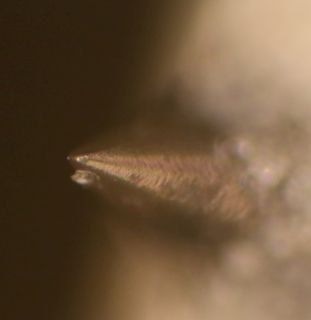 EPIStar 10X with EF-S 55-250mm STM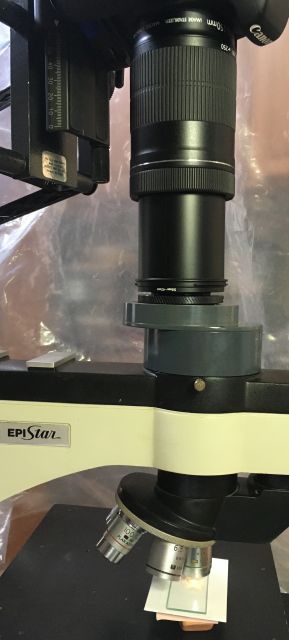 Infinity objectives can be used with a camera lens focused @ infinity,
Infinity objectives can be used with a camera lens focused @ infinity,in this case, a Reichert EPIStar 10x with Canon EF-S 55-250mm STM zoomed to 250mm. This is an example of camera telephoto as tube lens. To prevent this zoom from collapsing to 55mm, the camera body needs support. Fortunately, focus is internal. Some observations:
|
maintained by blekenbleu
